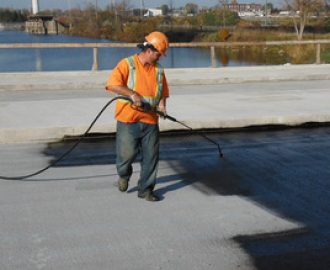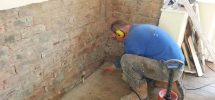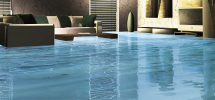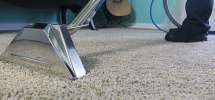Knowledge they say is power, professionalism and safety. It is not unconnected to placing your hands on common techniques employed to waterproof a house. Knowing the different methods as much as type of and where each m is applicable will help you determine which is best for your project when the time comes for protecting your building against moisture. In this piece are discussed four most common techniques used to make impervious to moisture building parts such as
. Roofs & Terrace
. Green roofs
. Decks & Balconies
. Kitchen & Bathrooms
. Walls and floors
. Basement
Swimming Pools
They are cementitious waterproofing, bituminous coating, liquid membrane waterproofing and polyurethane liquid membrane. Details run thus:
Cementitious Waterproofing
It is commonly used for the interior of a building- that is parts which aren’t exposed to weather. As the name implies, it uses cement as the major component. Traditional and local builders use pure clay instead of cement. Clay and cement materials are available in almost every building material store. The materials are mixed with water to form mortar which is applied. The right proportion or ratio of materials has to be applied because if the mortar is not mixed using the right compression rate, it will sustain cracks and the purpose it is meant to serve will be inhibited.
It is made of semi-hard materials and for that it won’t stand the test of time if applied to the outer parts of a building. Cementitious waterproofing experts can only be applied to areas not exposed to climate- that is, building interiors like kitchen, toilets, showers and storage room.

Liquid Membrane Waterproofing
It is made of fine coating used to beautify and or protect a surface against moisture. It is made of two main components, top coats and primer coats. Spraying, trowelling and rolling are the methods by which it is applied. It is commonly used for covering metal surfaces on which it form a thin coating of oxide. The coating materials used are sort of pigments which are mixed in suspended liquid. When applied onto a surface, the coating will cure into rigid pigments which blend into the surface to skin it. Quality depends on the type of polymeric substances used to make the coats.
Polyurethane Liquid Membrane
This is pretty much suitable for for outer areas exposed to weather of any sort for the fact that is made of rigid materials that withstand environmental or weathering shocks. Though the materials are a little worth the weight in gold. It is highly elastic and robust. Polyurethane materials are moisture sensitive. For that, application has to be performed under warmth condition. The concrete slab on which is to be applied has to be dispensed completed of moisture beforehand.




